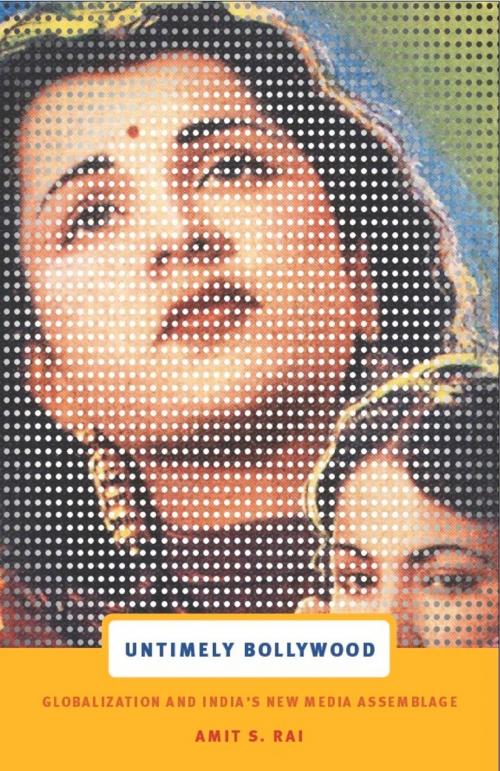Untimely Bollywood
Globalization and India’s New Media Assemblage
Nonfiction, Entertainment, Film, History & Criticism, Performing Arts| Author: | Amit S. Rai | ISBN: | 9780822392330 |
| Publisher: | Duke University Press | Publication: | May 27, 2009 |
| Imprint: | Duke University Press Books | Language: | English |
| Author: | Amit S. Rai |
| ISBN: | 9780822392330 |
| Publisher: | Duke University Press |
| Publication: | May 27, 2009 |
| Imprint: | Duke University Press Books |
| Language: | English |
Known for its elaborate spectacle of music, dance, costumes, and fantastical story lines, Bollywood cinema is a genre that foregrounds narrative rupture, indeterminacy, and bodily sensation. In Untimely Bollywood, Amit S. Rai argues that the fast-paced, multivalent qualities of contemporary Bollywood cinema are emblematic of the changing conditions of media consumption in a globalizing India. Through analyses of contemporary media practices, Rai shifts the emphasis from a representational and linear understanding of the effects of audiovisual media to the multiple, contradictory, and evolving aspects of media events. He uses the Deleuzian concept of assemblage as a model for understanding the complex clustering of technological, historical, and physical processes that give rise to contemporary media practices. Exploring the ramifications of globalized media, he sheds light on how cinema and other popular media organize bodies, populations, and spaces in order to manage the risky excesses of power and sensation and to reinforce a liberalized postcolonial economy.
Rai recounts his experience of attending the first showing of a Bollywood film in a single-screen theater in Bhopal: the sensory experience of the exhibition space, the sound system, the visual style of the film, the crush of the crowd. From that event, he elicits an understanding of cinema as a historically contingent experience of pleasure, a place where the boundaries of identity and social spaces are dissolved and redrawn. He considers media as a form of contagion, endlessly mutating and spreading, connecting human bodies, organizational structures, and energies, thus creating an inextricable bond between affect and capital. Expanding on the notion of media contagion, Rai traces the emerging correlation between the postcolonial media assemblage and capitalist practices, such as viral marketing and the development of multiplexes and malls in India.
Known for its elaborate spectacle of music, dance, costumes, and fantastical story lines, Bollywood cinema is a genre that foregrounds narrative rupture, indeterminacy, and bodily sensation. In Untimely Bollywood, Amit S. Rai argues that the fast-paced, multivalent qualities of contemporary Bollywood cinema are emblematic of the changing conditions of media consumption in a globalizing India. Through analyses of contemporary media practices, Rai shifts the emphasis from a representational and linear understanding of the effects of audiovisual media to the multiple, contradictory, and evolving aspects of media events. He uses the Deleuzian concept of assemblage as a model for understanding the complex clustering of technological, historical, and physical processes that give rise to contemporary media practices. Exploring the ramifications of globalized media, he sheds light on how cinema and other popular media organize bodies, populations, and spaces in order to manage the risky excesses of power and sensation and to reinforce a liberalized postcolonial economy.
Rai recounts his experience of attending the first showing of a Bollywood film in a single-screen theater in Bhopal: the sensory experience of the exhibition space, the sound system, the visual style of the film, the crush of the crowd. From that event, he elicits an understanding of cinema as a historically contingent experience of pleasure, a place where the boundaries of identity and social spaces are dissolved and redrawn. He considers media as a form of contagion, endlessly mutating and spreading, connecting human bodies, organizational structures, and energies, thus creating an inextricable bond between affect and capital. Expanding on the notion of media contagion, Rai traces the emerging correlation between the postcolonial media assemblage and capitalist practices, such as viral marketing and the development of multiplexes and malls in India.















